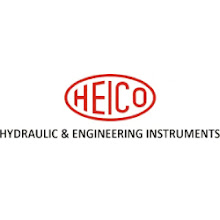Hydraulic Machines have revolutionized various industries with their ability to harness the power of fluid mechanics for a wide range of applications.
From simple hydraulic systems to complex machinery, the evolution of hydraulic machines has been remarkable.
This article explores the history, technologies, and diverse industry applications of hydraulic machines.
Hydraulic Machine:
An Overview Hydraulic machines utilize the principles of fluid mechanics to generate, control, and transmit power.
They consist of components such as hydraulic pumps, cylinders, valves, and fluid reservoirs.
These machines are powered by pressurized hydraulic fluid, usually oil, which is controlled by valves and distributed through hydraulic lines.
Evolution of Hydraulic Machines
The roots of Hydraulic Technology can be traced back to ancient civilizations, where water was used to power various devices.
However, the modern development of hydraulic machines began in the 17th century with the invention of the hydraulic press by Joseph Bramah.
This breakthrough paved the way for the Industrial Revolution and laid the foundation for the hydraulic technology we see today.
Throughout the 20th century, hydraulic technology advanced rapidly, driven by innovations in materials, design, and manufacturing processes.
The introduction of hydraulic pumps, valves, and actuators revolutionized industries such as construction, manufacturing, and transportation.
Today, Hydraulic Machine continue to evolve with advancements in digital control systems, energy efficiency, and environmental sustainability.
Hydraulic Machine Technologies
Modern hydraulic machines employ a range of technologies to enhance performance, reliability, and efficiency.
Hydraulic pumps, such as gear pumps and piston pumps, are used to generate hydraulic pressure by converting mechanical energy into fluid flow.
Hydraulic cylinders are actuated by the pressurized fluid to create linear motion, while hydraulic motors convert fluid energy into rotary motion.
Valves play a crucial role in controlling the flow and direction of hydraulic fluid within the system.
Proportional and servo valves enable precise control of hydraulic actuators, allowing for smooth and accurate motion in various applications.
Additionally, hydraulic accumulators store energy in the form of pressurized fluid, providing additional power during peak demand or emergencies.
Industry Applications of Hydraulic Machines
Hydraulic machines find diverse applications across various industries due to their versatility, power, and reliability.
In the construction industry, hydraulic excavators, bulldozers, and cranes are used for earthmoving, material handling, and lifting operations.
These machines offer high power-to-weight ratios and precise control, making them indispensable in construction projects of all scales.
Manufacturing processes rely heavily on hydraulic machines for shaping, forming, and assembly operations.
Hydraulic presses are used for metal stamping, forging, and molding processes, enabling mass production of precision components with high accuracy and repeatability.
In the automotive industry, Hydraulic Systems are employed in vehicle braking, steering, and suspension systems, ensuring safe and efficient operation on the road.
Hydraulic machines also play a crucial role in the aerospace, marine, and agriculture industries.
Aircraft hydraulic systems control landing gear, flight control surfaces, and braking systems, ensuring the safety and performance of commercial and military aircraft.
In marine applications, hydraulic systems power ship steering, propulsion, and cargo handling equipment, enabling efficient maritime transportation.
In agriculture, hydraulic machines are used in tractors, harvesters, and irrigation systems, enhancing productivity and crop yields.
Conclusion:
Hydraulic machines have come a long way since their inception, evolving into sophisticated systems with diverse applications across various industries.
From construction and manufacturing to aerospace and agriculture, hydraulic technology continues to drive innovation and efficiency.
With ongoing advancements in technology and engineering, the future of hydraulic machines looks promising, promising further enhancements in performance, reliability, and sustainability.
Also read: Understanding the Function of a Hydraulic Machine




0 Comments